Ask Ethan: How Would You Explain The Big Bang To A Child?
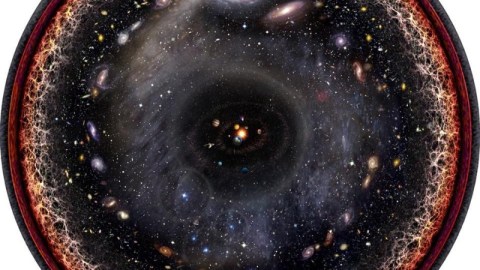
It’s something most adults don’t understand very well. So what should you tell a child?
If you’ve ever had a conversation with an inquisitive, curious child, you might have experienced that they all end the same way. They’ll begin by asking where something comes from or how something works, a behavior you very much want to encourage. But then, when you answer that, there’s the inevitable follow-up. Your answer now becomes the topic of a new question, which unfolds into a conversation that eventually runs into the limits of your (or even humanity’s) knowledge. At some point, you may even run into questions about the very beginning of it all: the Big Bang. That’s where this week’s question comes from, courtesy of Tyler Legare, who asks:
How would you explain the big bang to a 10-year-old?
Even though the Big Bang is something that most adults don’t fully understand, it’s a story that science knows the answer to. Here’s how I’d tell it to a 10-year-old.
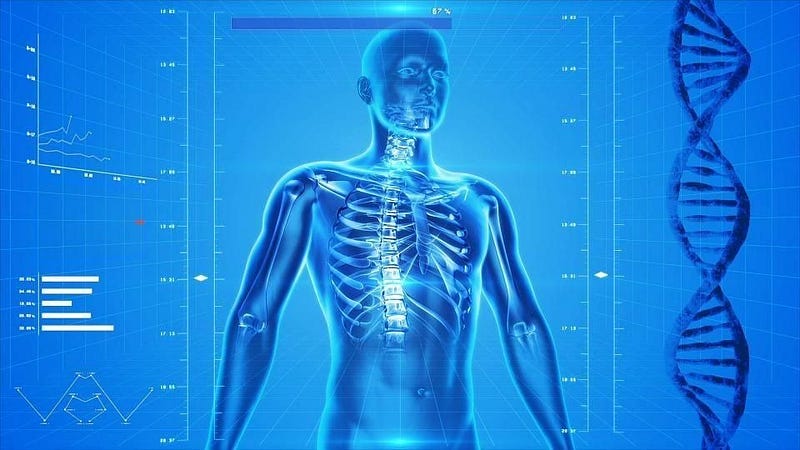
So, you want to know where it all comes from? Everything, from you and me here on Earth to all the planets, stars, and galaxies in the Universe? Well, so did pretty much every curious person who’s ever lived. And for most of human history — for thousands upon thousands of years — we only had stories, guesses, and speculations. What we didn’t have until very recently, over the last 100 years or so, was a scientific answer.
That answer is a term you might have heard before: the Big Bang. The Big Bang is where everything that we have in our Universe today came from. It’s the secret to understanding how our Universe got to be the way it is today, and the key to unlocking the ancient history of what our Universe was like long ago. To get a feeling for how important this is, let’s take a look at what we actually see when we look at the Universe today.
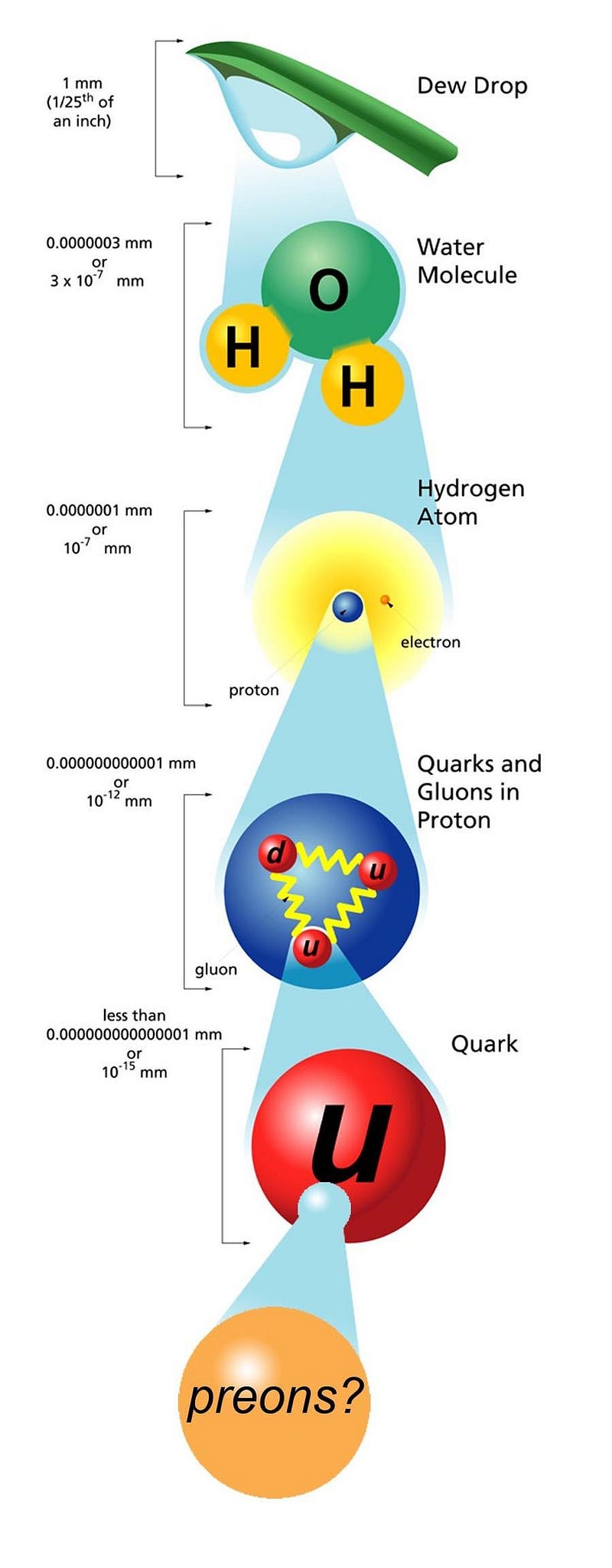
When we look around at everything on Earth, there are all sorts of things to see, hear, smell, taste, and touch. Everything that our body is capable of interacting with — other people, food, air, even light — is made of matter and energy. This isn’t just true of the things we find on Earth, of course. Wherever we look in the Universe, from other planets to stars to distant galaxies and beyond, we find the same things: matter and energy, made out of the same basic building blocks we find here on Earth.
The only reason we can get such complicated things as human beings out of these basic building blocks is because there are so many possible ways that the fundamental bits of matter and energy can bind together. The iron in our blood, the calcium in our bones, and the sodium in our nerves are just a few examples of how these tiny atomic building blocks can bind together to create something as complex and intricate as our entire bodies.
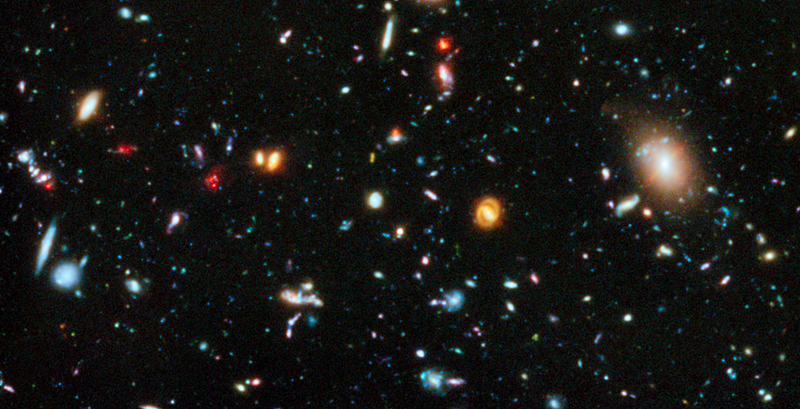
Beyond our own planet, the Universe is vast, enormous, and full of stuff. There are hundreds of billions of stars in our Milky Way galaxy, and practically every star ought to have its own system of planets. But the Milky Way is just one of perhaps two trillion galaxies present in the Universe we can see. And what’s remarkable about all of them is, with only a few dozen exceptions, they all appear to be moving away from us.
This was an enormous surprise when it was first discovered way back in the 1920s. Why should almost every galaxy in the Universe be speeding away from us? And it gets worse: the farther away a galaxy is, the faster it appears to speed away from us.
Why would it be doing this? The answer can be found in a ball of dough filled with raisins.
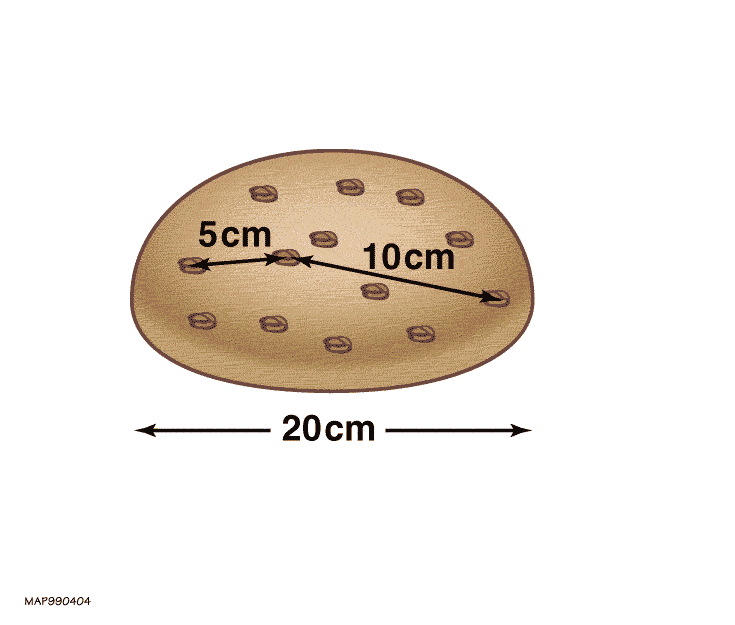
If you want to properly bake your dough into raisin bread, you first have to let the bread leaven. That means you mix your dough up, you put your raisins in it, and then you cover it and put it in a warm, dry place to let it rise. Over time, the dough will double in size, but the raisins inside your bread will just remain normal raisins.
But what would you see if you were one of the raisins, and you could only see the other raisins, and not the dough itself? As time went on and the dough continued to rise, every raisin would appear to get farther apart from every other raisin. The farther away they are, the faster they’d appear to move apart.
Well, in our Universe, the raisins are individual galaxies, and the dough is the invisible fabric of space.
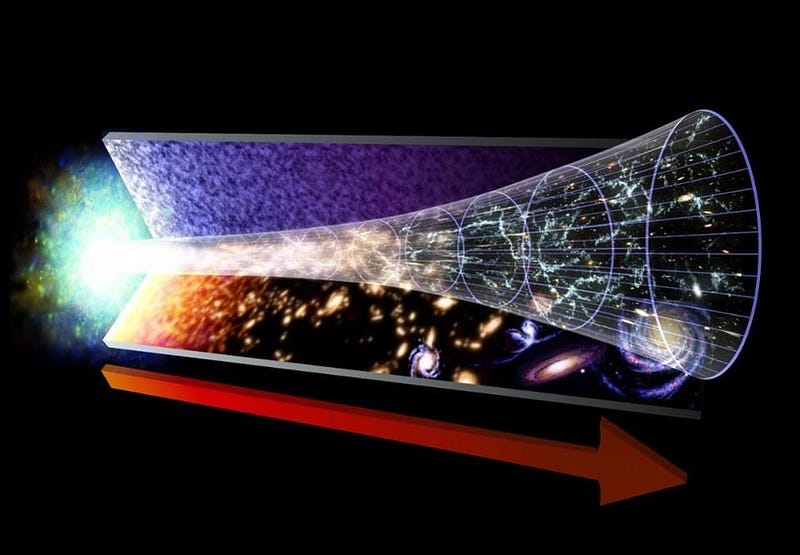
If space itself is expanding like this, then that means the Universe is getting bigger and the galaxies are getting farther apart as time goes forward. But that also means, if we wanted to imagine what the Universe was like in the past, that space was smaller. If we only looked at the raisins, that would mean the Universe was denser in the past, with more galaxies (and more matter) in the same amount of space early on, and with less of them later on.
This is the “big idea” of the Big Bang. Things that aren’t held together, like any two well-separated galaxies, are getting farther apart as time goes on. But this also means that they were closer together in the past. And if we extrapolate backwards in time, farther and farther, we can imagine that everything — all the matter and energy we can see — was once concentrated into one super-small region long ago.
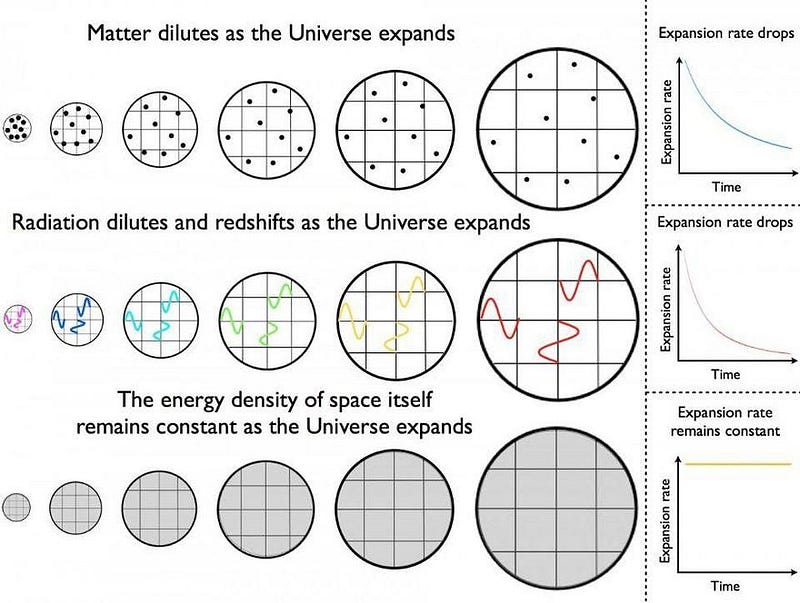
The Big Bang is this entire picture of our Universe’s history. Everything that exists today began, billions of years ago, in one small region of space. That space has been expanding ever since, and all the matter and energy that was present back then is still present today. It’s just more spread-out now, driven apart by the expansion of the Universe.
But the Big Bang isn’t just an origin story; it’s the only scientifically valid explanation for how the Universe grew to be the way it is today. To understand how, there’s only one more piece to the puzzle: the fact the pure energy in the Universe — in the form of light, or radiation — gets cooler when the Universe gets larger, and was hotter when the Universe was smaller. The farther back in time we look, we find a Universe that’s not only denser, but also hotter.
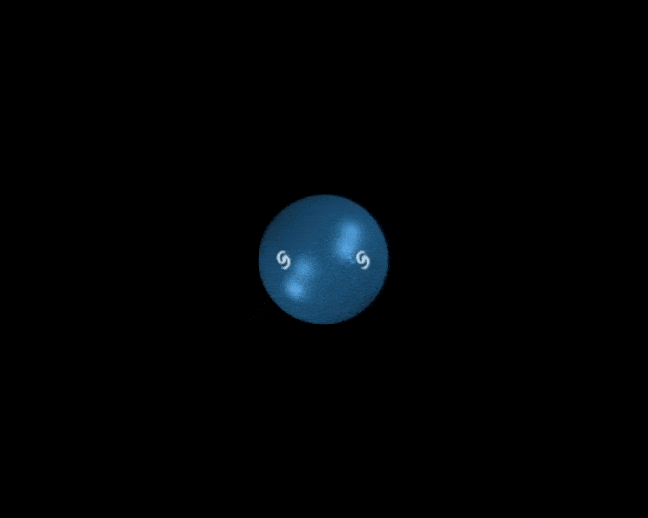
This still means that the earliest stages of the Big Bang still have all the matter that’s in our Universe today. But all that matter is not only compressed into a tiny amount of space, but that space is filled with large amounts of hot radiation. In the earliest stages, you cannot even make different kinds of atomic nuclei: the cores of atoms like iron, calcium, sodium, oxygen, or carbon. Only when the Universe has expanded (and cooled) enough does that happen.
Much later, the Universe expands and cools enough that we can form neutral atoms. All that radiation — which blasted atomic nuclei apart earlier on, and blasted neutral atoms apart for much longer — should still be around today. If the Big Bang were correct, we should be able to go out and look for it. In 1964, scientists finally discovered it, and by today (2020), we’ve measured it exquisitely. It’s real, and it’s definitely what the Big Bang predicted.

The Universe continued to expand and cool, but it also began to gravitate, where little tiny clumps of matter began attracting other clumps of matter. Over time, they grew together, with the largest clumps overcoming the expansion of the Universe. These lucky winners eventually grew into stars and galaxies, which gave rise to heavy elements, rocky planets, and in at least one case, intelligent life.
The Big Bang taught us how the Universe as-we-know-it began. It taught us how the Universe grew up from this ultra-dense early state all the way up to the present day. It’s a remarkable story, but one that isn’t over yet. The Universe continues to expand today, and that’s something that’s of tremendous interest to scientists. The next great mystery that we’re still trying to solve, however, is how it will all eventually end. Maybe you’ll be the one who finally figures it out.
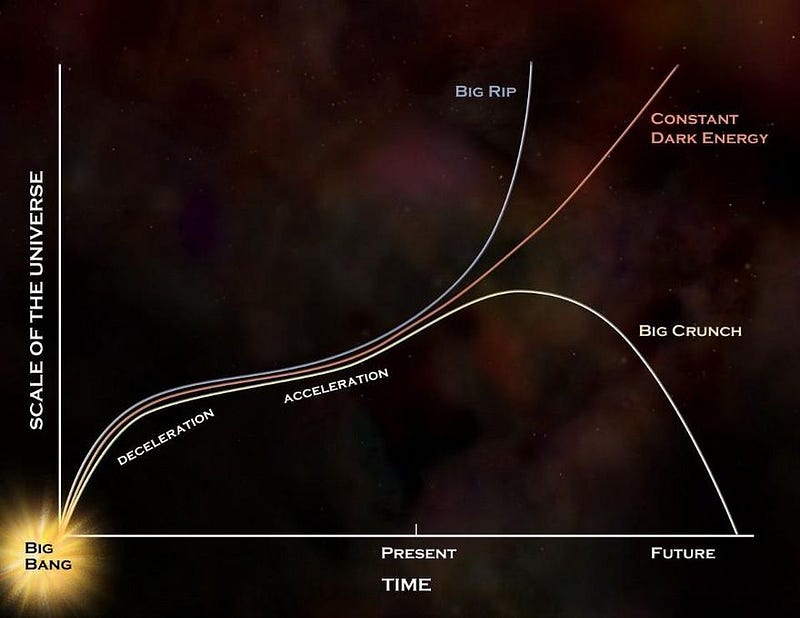
Send in your Ask Ethan questions to startswithabang at gmail dot com!
Ethan Siegel is the author of Beyond the Galaxy and Treknology. You can pre-order his third book, currently in development: the Encyclopaedia Cosmologica.




